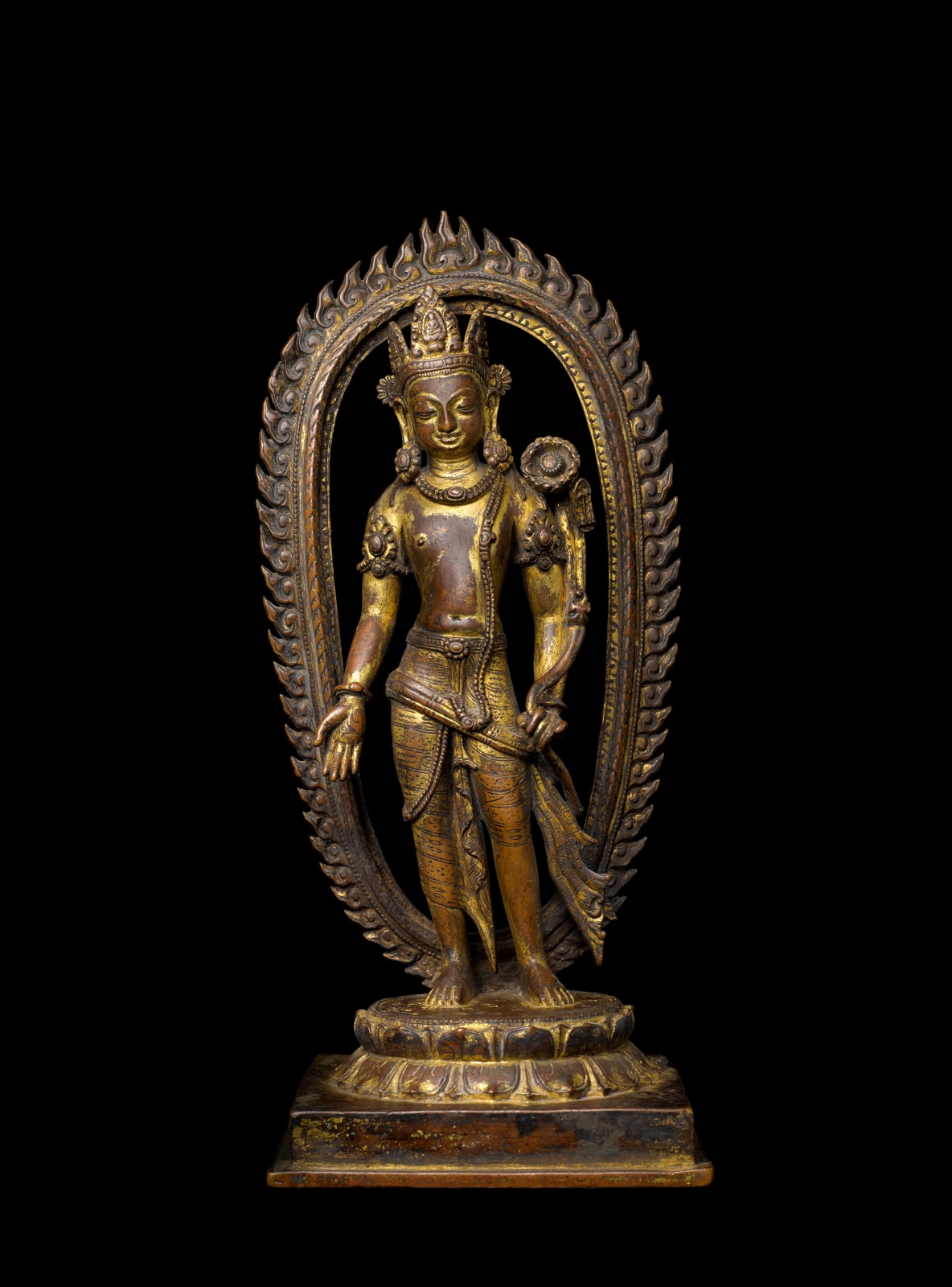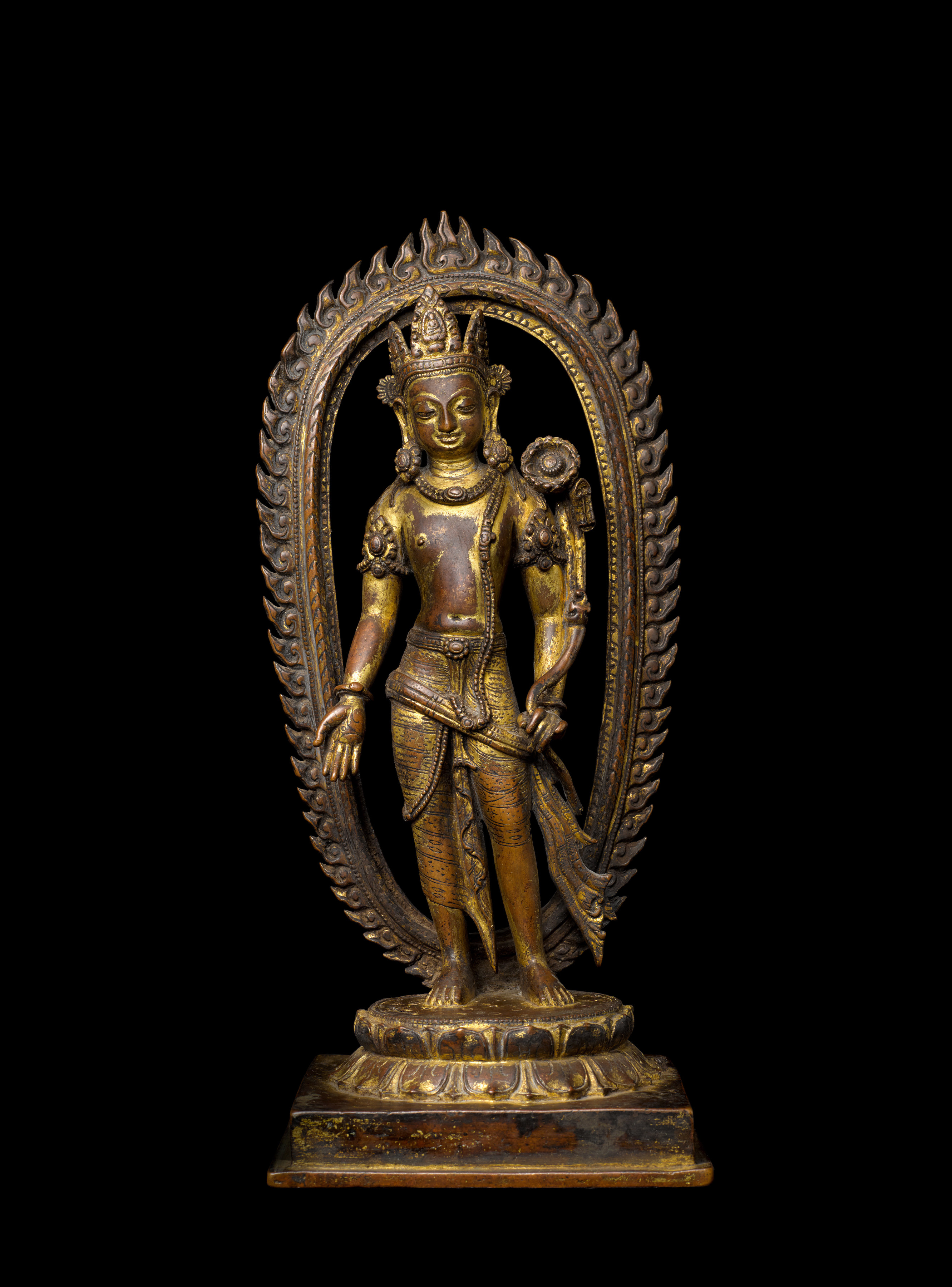
Provenance:
Christian Humann (Pan-Asian Collection), 1974-1982
Robert Hatfield Ellsworth, New York, 1982-1993
Sotheby's, New York, March 26, 1998, no. 79
European Private Collection
Published:
Pratapaditya Pal, The Arts of Nepal: Part I, Sculpture, Leiden/Koln, 1974, pl. 192
Ulrich von Schroeder, Indo-Tibetan Bronzes, Hong Kong, 1981, p. 323, pl. 83G
Jeanne de Guardiola, "Sotheby's New York: Indian and Southeast Asian Art on March 26th, 1998," Arts of Asia, 28, no. 4, 1998, p. 109
This figure of Padmapani is a fine and unusually complete example of a classic type of Nepalese sculpture that depicts standing bodhisattvas, the most popular being Avalokiteshvara Padmapani represented here. These, and statues of the standing Buddha, are amongst the most evocative images of Kathmandu Valley sculpture from the Licchavi and Transitional Periods (circa 400-1200). This example is remarkable for its natural poise and perfect balance, standing with the slightest sway to the hips, the weight taken on the right leg with the left bent at the knee and foot turned slightly to the side in a perfectly-observed stance. The head is gently inclined with an engaging expression on the face, and the right hand moves forward with open palm in a gesture of generosity and succor to his devotees. The figure is complemented by a perfectly symmetrical flaming arch and an elegant circular lotus pedestal. Details are carefully and finely rendered throughout. The lower garment is decorated with traditional striped textile patterns so redolent of early Nepalese sculpture. Areas of gilding are now rubbed through to the copper, but the statue is otherwise intact with remarkably little accidental wear and tear. Dr. Pal has dated this exquisite and rare Nepalese sculpture to the tenth century, comparing it with a tenth-century stele of Avalokiteshvara Padmapani at Yampi baha in Patan.[1]
1 Pal, op. cit., pl. 191

